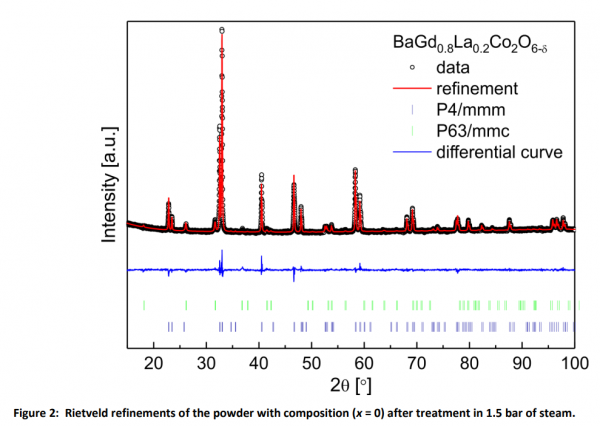No precious metals needed! Method for producing hydrogen using high-temperature steam
 |
Norwegian scientists have developed a material that can produce more cost-effective hydrogen.
A group of Norwegian scientists discovered a method of using thermal energy to produce hydrogen using steam instead of traditional liquid water. To achieve this goal, they need to use a material that can withstand extremely high temperatures when the steam reaches 600 degrees Celsius. For this reason, the scientists created a material called BGLC.
The process also provides the added benefit of not requiring precious metals such as platinum. "Working at higher temperatures provides an additional benefit," said Einar Vøllestad, a scientist at the SINTEF Industrial Research Institute. "You don't have to use precious metals."
These expensive metals, such as platinum, are needed in the next generation of low-temperature electrolyzers to make water cracking changes effective.
However, according to Vøllestad, when generating hydrogen from steam, these materials are not needed to complete the reaction because this method involves higher temperatures and higher catalytic activity.
On the contrary, the problem with this method is to find materials that can withstand steam when it reaches 600 degrees Celsius. This is the challenge facing Ragnar Strandbakke Vøllestad and other scientists. Vøllestad and Ragnar Strandbakke, a postdoctoral student at the Center for Materials Science and Nanotechnology at the University of Oslo, tried to overcome this challenge
The scientists first listed 120 materials, which they believe may be applicable to different parts of the process. In the end, they decided to choose a material that they knew would be effective and adjust its chemical composition to increase efficiency.

The materials they used consisted of barium, lanthanum, gadolinium, cobalt and oxygen. They named this material BGLC.
"What we have done is to replace some of the barium in the original material with more lanthanum, the purpose of which is to make it more efficient," Vøllestad said.
Researchers are working to expand the production of hydrogen through steam production technology. According to reports, researchers have developed the first electrolytic cell that uses pressurized steam to work efficiently. This electrolytic cell can be scaled up for industrial production. In other words, it needs to be applied in practice and must be able to run this process on a larger scale, which will be the next stage of the project.
This steam-to-hydrogen production process is particularly good because the hydrogen produced as a result of this technology and design is completely dry. Currently, all electrolysis processes produce hydrogen contaminated with water or other molecules. Before hydrogen is pressurized and stored, they must be separated from hydrogen, which requires additional process flow.
The results of this study were published in the journal Natural Materials. Original link
(Originally from: Hydrogen and Fuel Cell News Comprehensive China New Energy Network)
Artificial grass for playground
Playground Artificial Grass, Artificial Grass for Playgrounds, Artificial grass for kindergarden
JIANGSU WMGRASS CO., LTD. , https://www.wmgrassturf.com